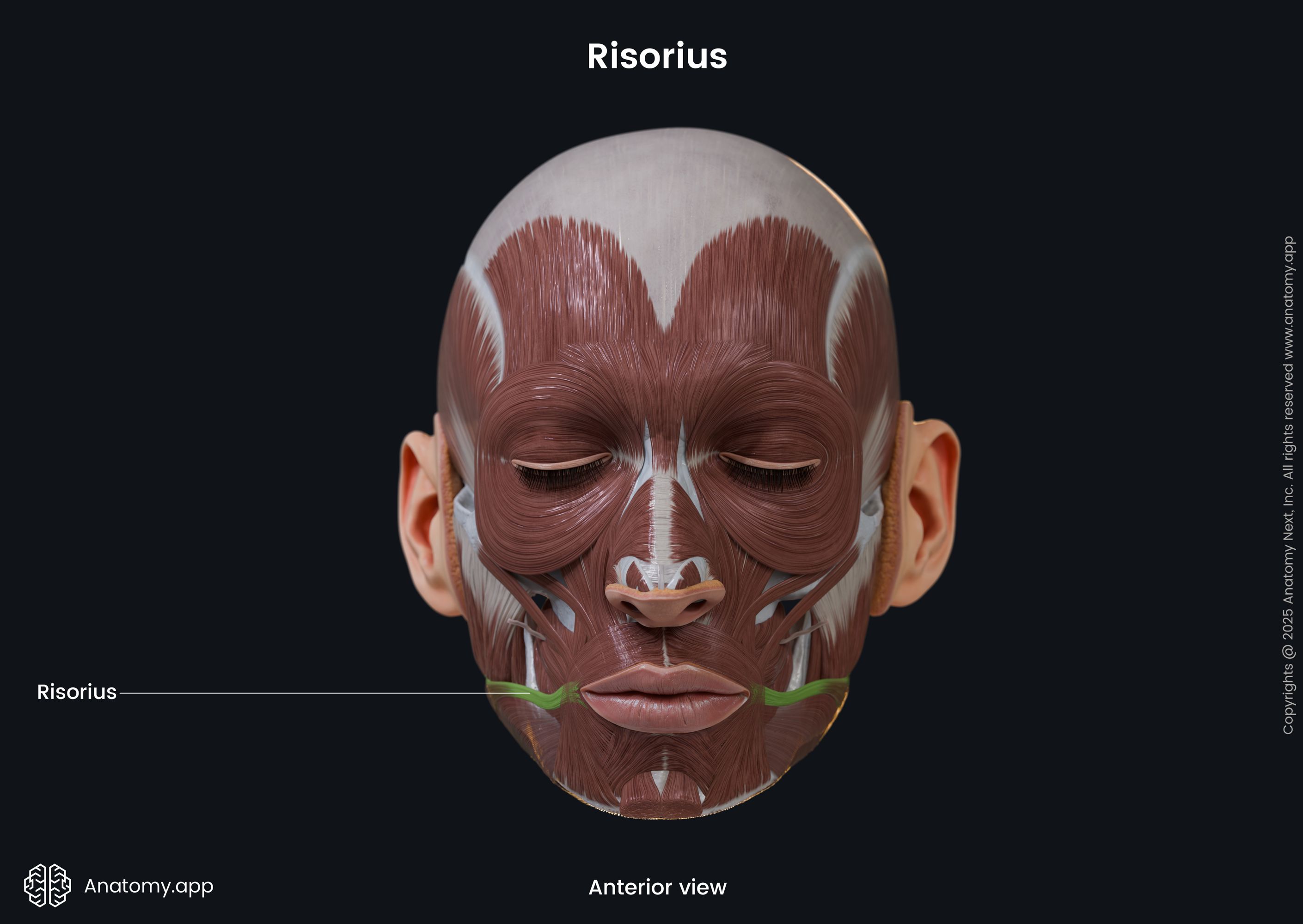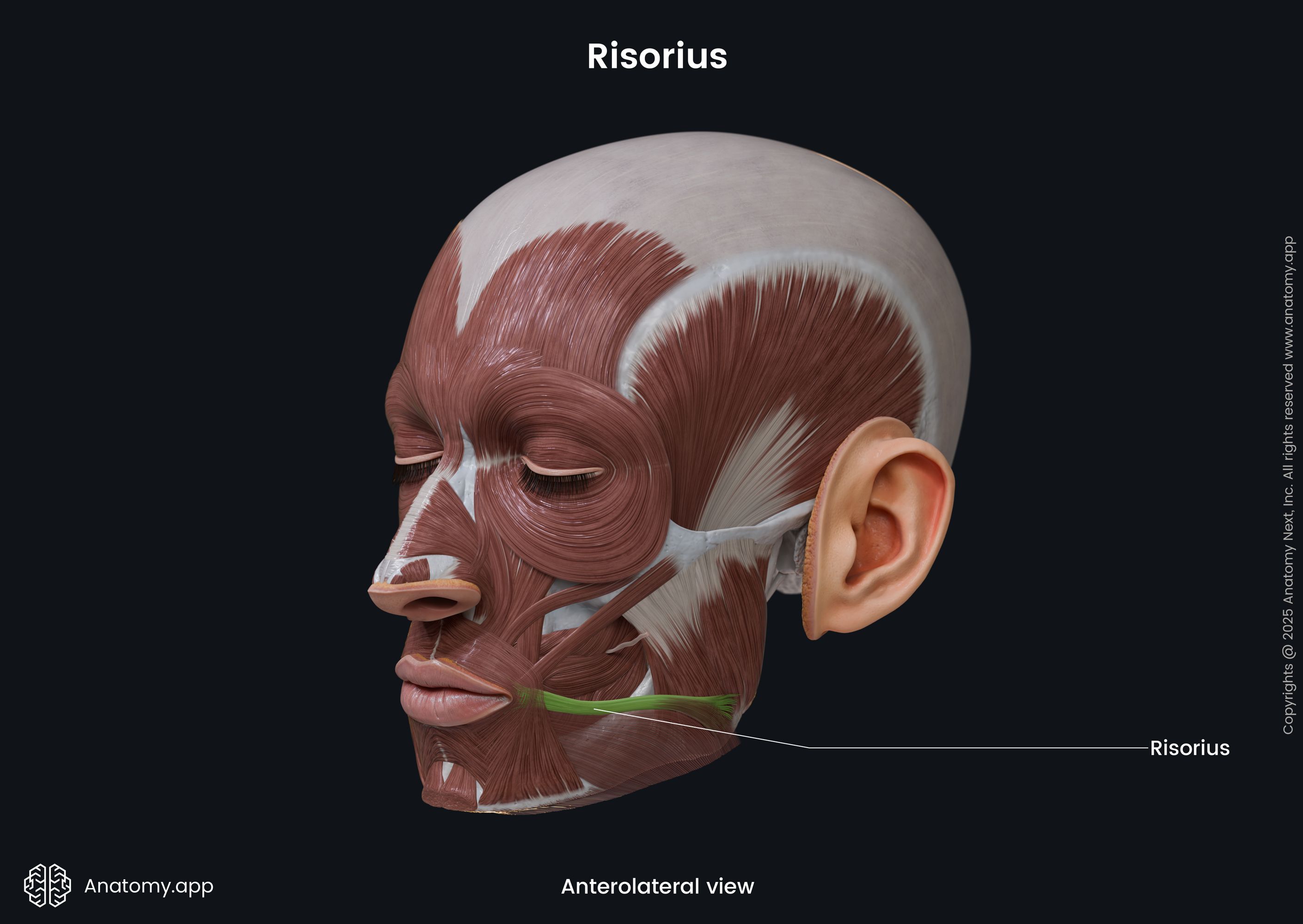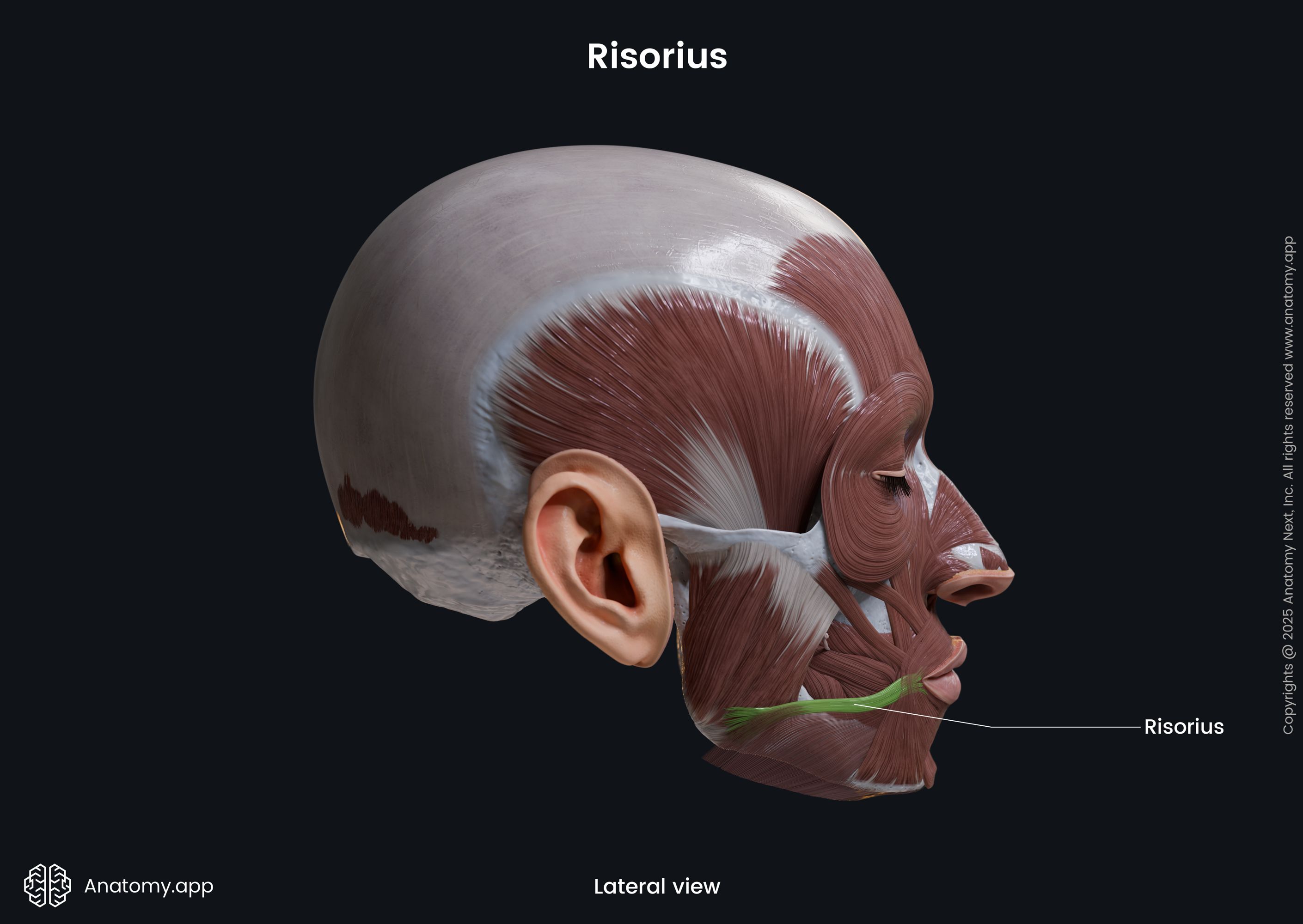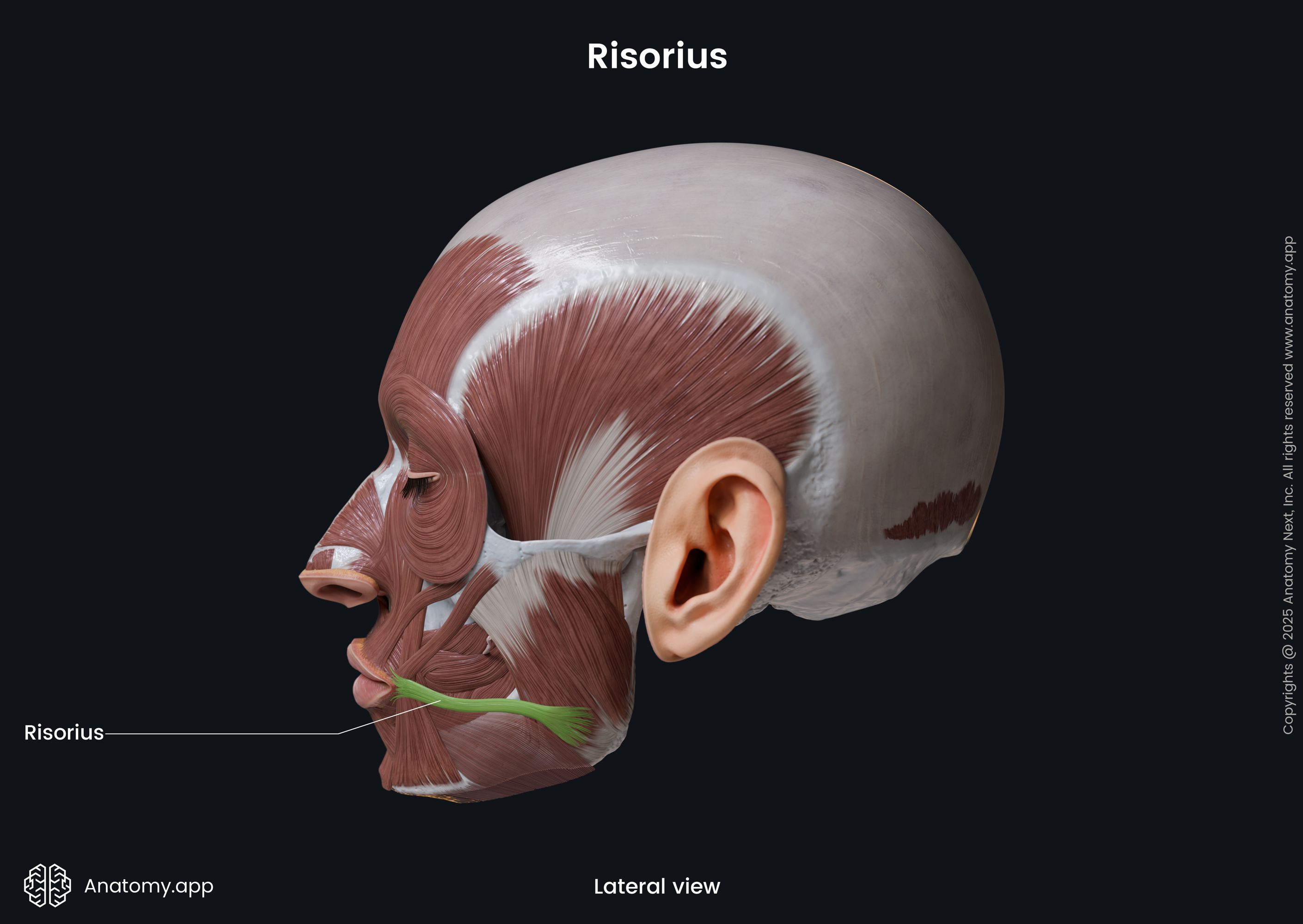- Anatomical terminology
- Skeletal system
- Joints
- Muscles
-
Head muscles
- Extraocular muscles
-
Facial muscles
- Occipitofrontalis
- Corrugator supercilii
- Depressor supercilii
- Orbicularis oculi
- Malaris
- Buccinator
- Orbicularis oris
- Mentalis
- Depressor anguli oris
- Depressor labii inferioris
- Levator anguli oris
- Levator labii superioris
- Risorius
- Zygomaticus major
- Zygomaticus minor
- Levator labii superioris alaeque nasi
- Nasalis
- Procerus
- Depressor septi nasi
- Compressor narium minor
- Dilator naris anterior
- Muscles of mastication
- Neck muscles
- Muscles of upper limb
- Thoracic muscles
- Muscles of back
- Muscles of lower limb
-
Head muscles
- Heart
- Blood vessels
- Lymphatic system
- Nervous system
- Respiratory system
- Digestive system
- Urinary system
- Female reproductive system
- Male reproductive system
- Endocrine glands
- Eye
- Ear
Risorius
The risorius (Latin: musculus risorius) is a muscle of facial expression located laterally to the opening of the oral cavity. It is classified as the buccolabial facial muscle. The risorius pulls the angle of the mouth laterally.





| Risorius | |
| Origin | Masseteric fascia |
| Insertion | Skin at angle of mouth |
| Action | Pulls angle of mouth laterally |
| Innervation | Buccal branch of facial nerve (CN VII) |
| Blood supply | Superior labial artery of facial artery |
Origin
The risorius originates from the masseteric fascia.






Insertion
The risorius inserts into the skin at the angle of the mouth.

Action
Upon activation, the risorius pulls the angle of the mouth laterally. Contractions of the risorius muscle produce facial expressions of pleasure and laughter.

Innervation
The risorius is innervated by the buccal branch of the facial nerve (CN VII).
Blood supply
The risorius muscle is mainly supplied by the superior labial branch of the facial artery.